You are viewing ARCHIVED content published online before January 20, 2025. Please note that this content is NOT UPDATED, and links may not work. Additionally, any previously issued diversity, equity, inclusion or gender-related guidance on this webpage should be considered rescinded. For current information, visit https://www.blm.gov/blog.
Grand Staircase-Escalante National Monument continues to demonstrate its scientific significance: Research published on tiny dinosaur eggs found in Kaiparowits Formation
Imagine, for a moment, scorching heat, sand, and wind whipping across the desert floor, chafing any exposed skin you neglected to cover while searching the rugged badlands of the Kaiparowits Plateau. Suddenly, you see something roughly the size of a marble, granted a marble that's been around for millions of years, but that's "eggs-actly" what happened when a group of paleontologists made a remarkable discovery in Grand Staircase-Escalante National Monument: marble-sized, bump-covered spheres that turned out to be tiny dinosaur eggs.
For these paleontologists, it's like any other day at the office, and if you're a fan of the monument and its paleontology program, you've heard the hype. The Monument's Kaiparowits Plateau is home to world-class fossils. But dinosaur eggs? Yes, even dinosaur eggs; once again, the "living laboratory" lives up to its monumental reputation.
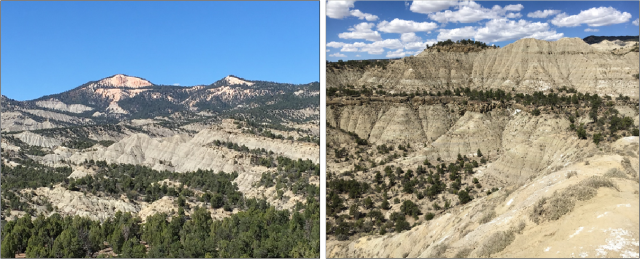
"The Kaiparowits Formation continues to provide significant discoveries," said Paria River District Paleontologist Dr. Alan Titus. "In terms of paleontological sites, the word 'significant' translates to significant enough that it is worthwhile to plan for and commit additional resources toward, in the interest of furthering scientific research because it will substantially increase our knowledge or contribute something new to science."
There you have it; even millions of years later, dinosaur eggs are still a thing, quietly waiting to be discovered. The question is how? How can something so small and fragile still be fossilized within the heart of this remote and rugged landscape?
"One might assume that the modern eggshells we're familiar with, such as chicken eggs, would be incredibly delicate objects and hard to fossilize, but it turns out dinosaur eggs tended to be pretty thick, and the Kaiparowits Formation's slightly alkaline chemistry is perfect for preserving them for millions of years," said Titus.
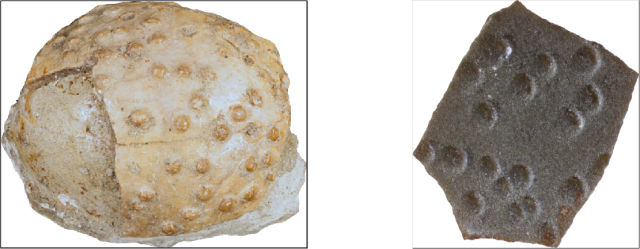
Unquestionably, scientific exploration on the monument has come a long way since its establishment in 1996, and as paleontologists continue stepping back into time, it becomes apparent that there is still so much more to discover.
"The true diversity and significance of Kaiparowits dinosaur eggshells are just starting to be understood," said Sara Oser, a paleontologist at the University of Colorado Museum of Natural History.
Standard protocol for naming new eggs includes taking cross-sections of the shell and studying the tiny details under a microscope. However, upon closer examination, the cross-sections didn't reveal the standard soda straw-like air tubes Oser expected, as seen in other Cretaceous eggs. Instead, the tubes were more complex, weaving in and out of the polished cross-section. Unable to determine the complex 3-D paths of the tubes from the cross-section, Oser had the eggs scanned with Micro CT, a technique that maps 3-D structures of tiny objects in fine detail.
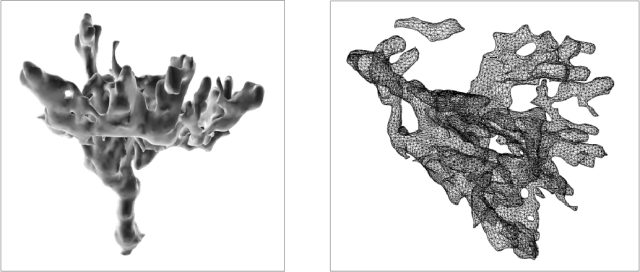
The results were astounding! The tubes formed complex branching networks, more bush-like than straw-like, and were infinitely more complicated than anything she had seen before. One of the best modern examples of eggs with such complex tube structures is those of ratites, large flightless birds like ostrich or emu. Although such birds probably hadn't evolved yet, Oser and team concluded the eggs likely belonged to some unknown, tiny species of bird-like dinosaur or a primitive bird.
However, the animal's exact nature is still a mystery because the eggs were not associated with bones. Still, given these eggs' uniqueness, the team could name them with a new scientific eggshell name (Stillatuberoolithus storrsi). Oser's article clarifies the etymology of the name, from the Latin stillare, to drip, in reference to the morphology of the nodes; from the Latin tuber, bump, in reference to the nodes; and ooliths, a combination of the Greek meaning 'egg stone' commonly applied to fossil eggshell. The oospecies name honors Dr. Glenn Storrs of the Cincinnati Museum of Natural History for his mentorship in the field.

Because the new eggs are among the smallest ever described from the Mesozoic fossil record, the team submitted their work to the prestigious scientific journal Nature and subsequently accepted it. You can read the entire paper in the link provided on the GSENM Paleontology Timeline or at Tiny, ornamented eggs and eggshell from the Upper Cretaceous of Utah represent a new ootaxon with theropod affinities | Scientific Reports (nature.com). Oser's photographs may be viewed at Dinosaur eggshell research on Grand Staircase-Escalante National Monument | Flickr.
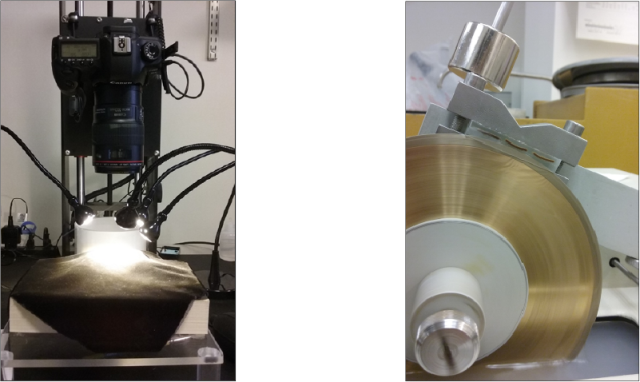
Getting a paper into Nature is challenging, so the team had reason to celebrate. Titus was emphatic about how important the find was.
"The serendipitous discovery and subsequent naming of these new eggs underscore just how little we know and how important Grand Staircase's largely unexplored fossil resources are for understanding the complex ecology of the dinosaurs just before their catastrophic extinction," said Titus. "Plenty more discoveries like this are waiting to be made in the Kaiparowits region, and I am thankful that researchers and public institutions are available to preserve these important fossils for future generations, sometimes collecting specimens even when their true importance is yet to be understood."
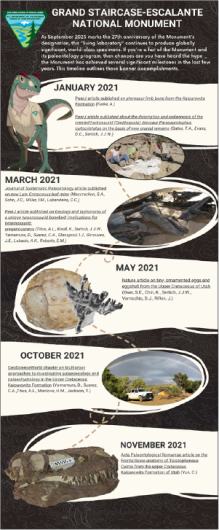
David Hercher, Public Affairs Specialist
Related Stories
- Popular posts: BLM's most viewed blogs of 2025
- Using science to uncover mysteries of the Mesa archaeological site in Alaska
- Agua Fria National Monument: A desert oasis with a rich history and a vital present
- Building for birds: Scouts support public lands
- Virtual adventures await: Discover six BLM public lands you can tour from anywhere
